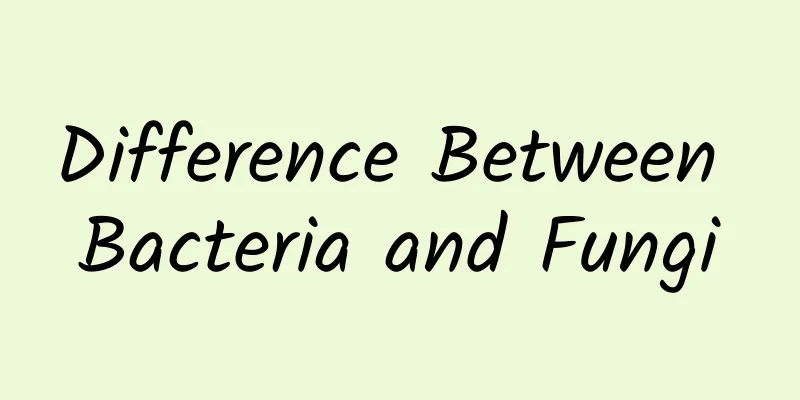Difference Between Bacteria and Fungi

|
Although bacteria and fungi have very similar names, they are actually completely different organisms. Everyone must have heard of bacterial infections and fungal infections, both of which are diseases that people often get. However, the symptoms of bacterial and fungal infections are completely different, and the treatment measures and drugs used are also very different. So, what is the difference between bacteria and fungi? Bacteria and fungi both have the word "菌" in their names and are both microorganisms, but they differ in many ways in terms of biological type, structure, size, proliferation method, and name: A. Different types of organisms, Bacteria do not have a nucleus surrounded by a nuclear membrane and are prokaryotes; fungi have a nucleus surrounded by a nuclear membrane and are eukaryotes. Bacteria are all composed of a single cell and are single-celled organisms; fungi include both single-celled organisms (such as yeast) and multicellular organisms (such as edible fungi, mold, etc.) composed of multiple cells. B. Different cell structures, Both bacteria and fungi have cell structures and are cellular organisms. They both have cell walls, cell membranes, and cytoplasm in their cell structures, but they have many differences, specifically: One is that the composition of the cell wall is different: the main component of the bacterial cell wall is peptidoglycan, while the main component of the fungal cell wall is chitin. Second, the composition of organelles in the cytoplasm is different: bacteria have only one organelle, the ribosome; while fungi, in addition to ribosomes, also have multiple organelles such as the endoplasmic reticulum, Golgi apparatus, mitochondria, and centrosomes. Third, bacteria do not have a formed nucleus, only a nucleoid; fungi do. Fourth, bacteria do not have chromosomes, and their DNA molecules exist alone; the DNA in the fungal cell nucleus is combined with proteins to form chromosomes (chromatin). C. The cells are of different sizes. Prokaryotic cells are generally smaller, with a diameter of 1μm~10μm; eukaryotic cells are larger, with a diameter of 10μm~100μm. D. The proliferation methods are different. Bacteria are prokaryotes, which are single-cell organisms. They proliferate by cell division and have a unique method of prokaryotic proliferation - binary fission. Fungi are eukaryotic organisms. Cell proliferation is mainly carried out through mitosis. Due to the different types of fungi, their individual proliferation methods mainly include budding reproduction (such as yeast) and spore reproduction (edible fungi). E. The composition of the names is different. Although both bacteria and fungi have the word "菌" in their names, the names of bacteria generally contain words such as "球", "棒", "弧", "旋", etc. that describe the bacterial morphology. Only lactic acid bacteria are an example (actually lactobacillus), while the names of fungi do not contain this word. |
>>: The efficacy of revolutionary grass
Recommend
What should I pay attention to when doing glucose tolerance test tomorrow?
Many people are having a physical examination for...
Does nebulization have side effects on pregnant women?
Nebulization will have certain effects on pregnan...
Thickening of the endometrium
Endometrial thickening, also known as endometrial...
What are the Chinese medicines for weight loss?
With the development of society and the improveme...
What to do if skin allergy is scratched
Data shows that about 20% of people may suffer fr...
I want to sleep at noon but I can't sleep. What should I do?
After a busy morning of work and study, many peop...
How to make marinade
Sauce is the condiment we add when we eat. For ex...
What are the benefits of drinking lantern grass soaked in water?
Lantern grass is a traditional Chinese medicine. ...
What causes yellow tooth roots?
Yellowing of tooth roots is caused by inadequate ...
Why do I have alternating dry and loose stools?
Alternating dry and loose stools may be caused by...
What is the pathological cause of Wernike encephalopathy? What are the clinical manifestations?
Wernicke encephalopathy is a group of syndromes f...
What is a vaccine?
I believe that in the memories of the 80s and 90s...
What foods are good for vertigo? These are essential
Factors such as low mood can cause vertigo. Some ...
What to eat for cold and cough
Colds and coughs may cause harm to people's h...
What to eat for coronary artery insufficiency
The human body is so fragile. You may be a health...









